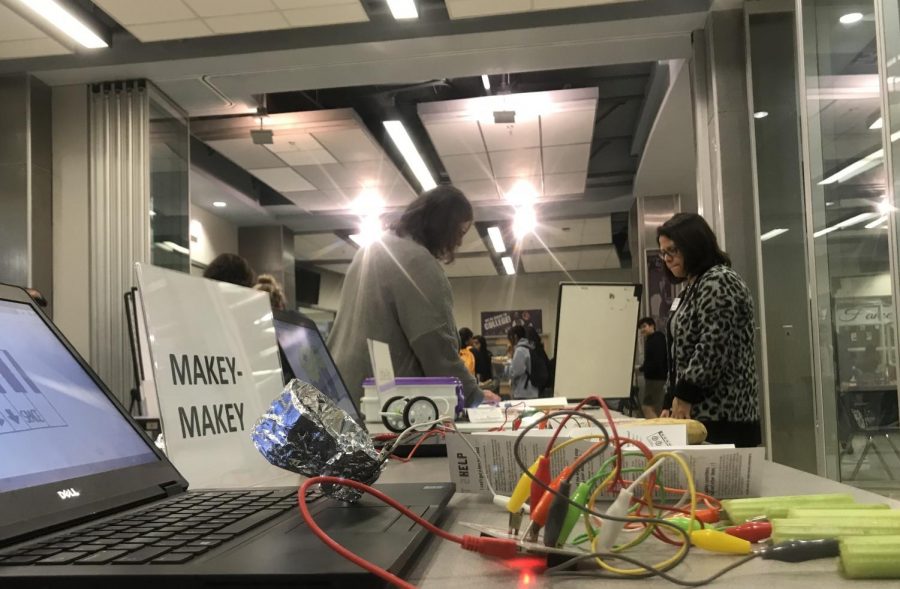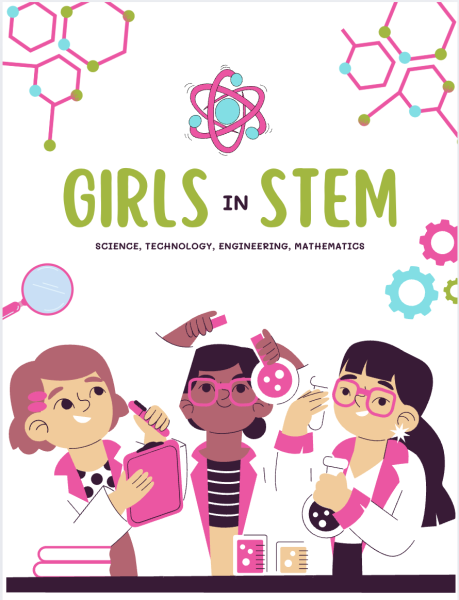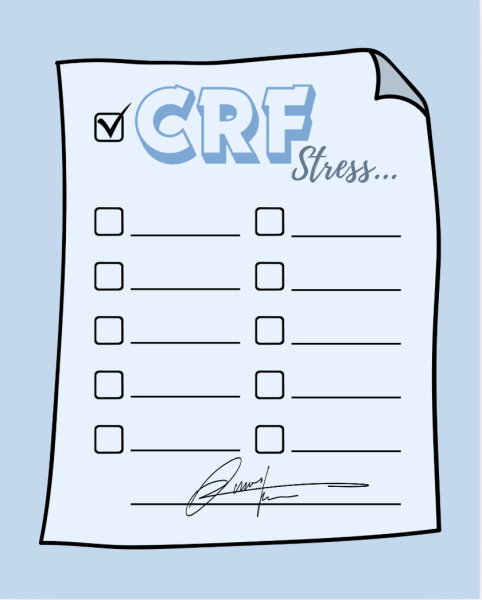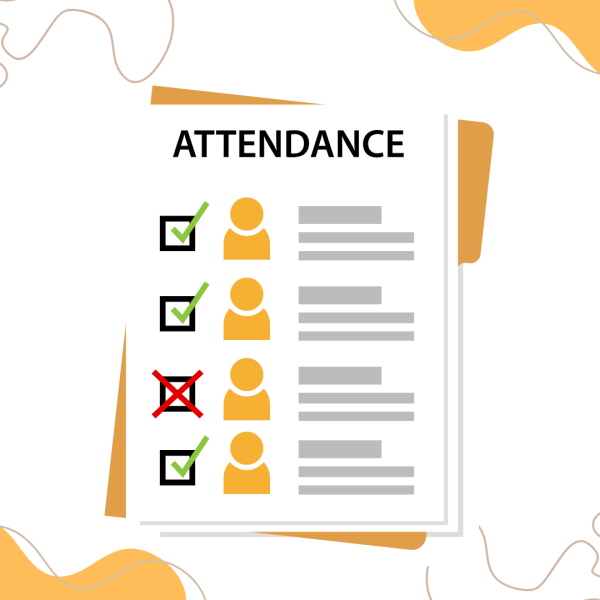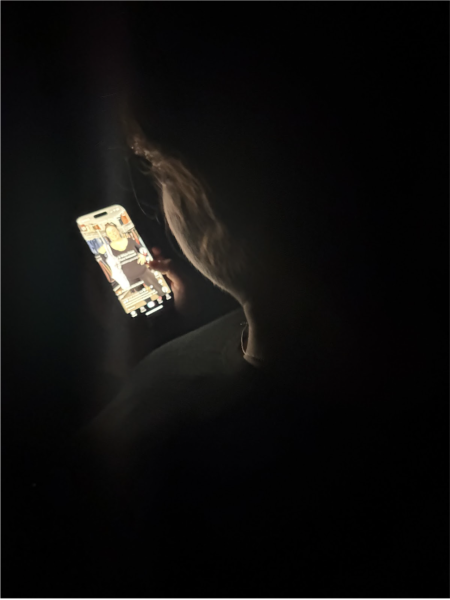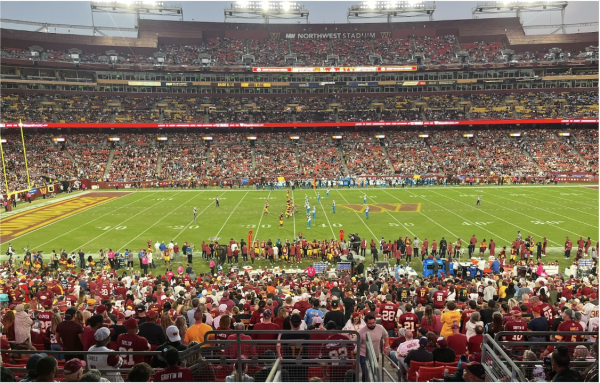Library opens “Makerspace”
School Library opens a STEAM area available to students during free periods
While school may be a place of work and overwhelming at times, some students choose to relieve stress through another school activity. The school library has recently opened a Makerspace, a corner of the library dedicated to relaxation and student creativity through science, technology, engineering, arts and mathematics (STEAM). An exposition was held Thursday, February 6, in the fishbowl area of the cafeteria. There, the library displayed both the artistic and technological components of the Makerspace.
The Makerspace includes many activities ranging from scrapbooking to programming Ozobots, which are miniature coding robots that are controlled by colored lines, and virtual reality goggles. The goal of the Makerspace is to allow students to work creatively with obscure mediums. Some days will include projects and demonstrations like creating celery pianos and banana drums during computer workshops. Most of the time, students will be able to roam the area freely and the staff will be there to help with projects or answer questions. The Makerspace is to be a place for both academic and original thoughts.
“We’re hoping, through our expo, that we get ideas of what students want to do,” school librarian Ms. Meg Schryver said.
Often times there will be instructors to aid more complicated projects or group activities, such as LED light crafting, but students will be encouraged to create without much assistance, especially regarding Keva Planks which are building blocks that can be used to engineer intricate bridges or structures, and other hands-on materials. While the space already offers many games and innovative opportunities, Ms. Schryver also aims to include student vision when adding to it in the future.
“We have a lot of things we can work on here in the library,” Ms Schryver said. “[But] we want it to be very student-driven.”
Freshman Ellie Joyce took interest in the Makerspace, expressing that it was an interesting concept to have a place where students like herself could unwind. Although she may not utilize it as much as her classmates, Joyce found it both intriguing and useful.
“I think [the space] sounds really cool,” Joyce said. “I think that sometimes students need that place that they can go where it’s quiet, not necessarily to work, but where you can really just be creative.”
However, she also cited the risks of having such an unstructured area, recognizing its possible faults. She explained her worry of inappropriate student behavior, causing the program to replace expensive items or possibly shut down.
“I’m concerned that kids might take advantage of [the space], just to really mess around with it,” Joyce said.
Ms. Schyver’s enthusiasm was not equally matched by freshman Collette Flocken. Flocken was uninterested in the Makerspace’s activities, as she would rather spend her time doing what she feels is more productive work. She stated that completing homework was more important to her than crafting and decompressing during school hours.
“I’m not going to spend my free time in the library,” Flocken said. “[But] I think it could be cool for someone who’s interested in art.”
Whether students choose to craft buttons, program or live in virtual reality for a while, Ms. Schryver wants the area to remain available to all of the school. She will continue to gain feedback and add to the Makerspace regardless of its popularity, as it will remain a place for innovation.
“I hope all the students at W-L see [the Makerspace] as an opportunity to do something fun and creative in the library, and maybe relax and unwind a little,” Ms Schryver said.


